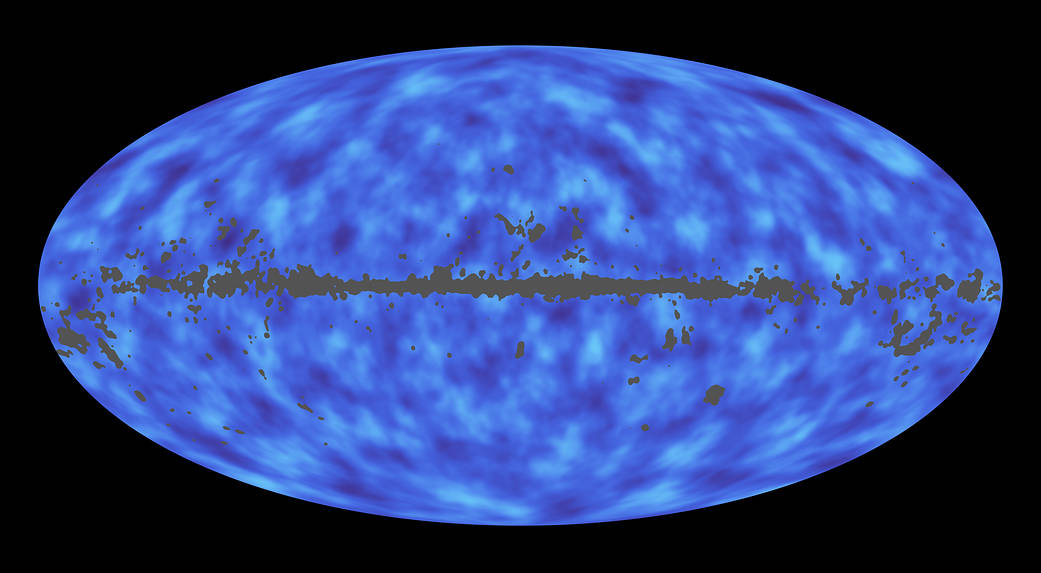
This full-sky map from the Planck mission shows matter between Earth and the edge of the observable universe. Regions with more mass show up as lighter areas while regions with less mass are darker. The grayed-out areas are where light from our own galaxy was too bright, blocking Planck’s ability to map the more distant matter.
Normal matter, which is made up of atoms, is only a small percent of the total mass in our universe. Most of the matter in the universe is dark – that is, it does not emit or absorb any light – so creating a map of its distribution is challenging. To make the full-sky map, the Planck team took advantage of the fact that all matter, even dark matter, has gravity that will affect light traveling to us from near the very edge of the observable universe. Planck mapped this light, called the cosmic microwave background, with exquisite precision over the whole sky, enabling scientists to create this matter map.
Planck is a European Space Agency mission, with significant participation from NASA. NASA’s Planck Project Office is based at NASA’s Jet Propulsion Laboratory, Pasadena, Calif. JPL contributed mission-enabling technology for both of Planck’s science instruments. European, Canadian and U.S. Planck scientists work together to analyze the Planck data.
Image credit: ESA/NASA/JPL-Caltech

























